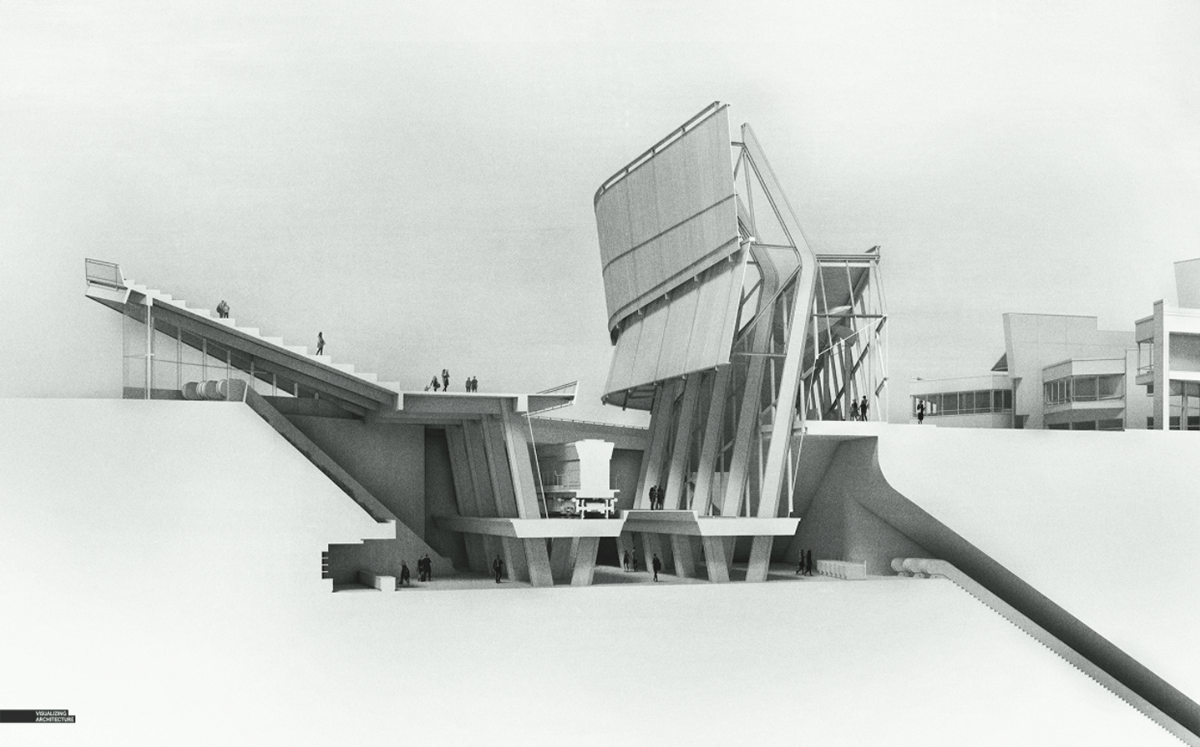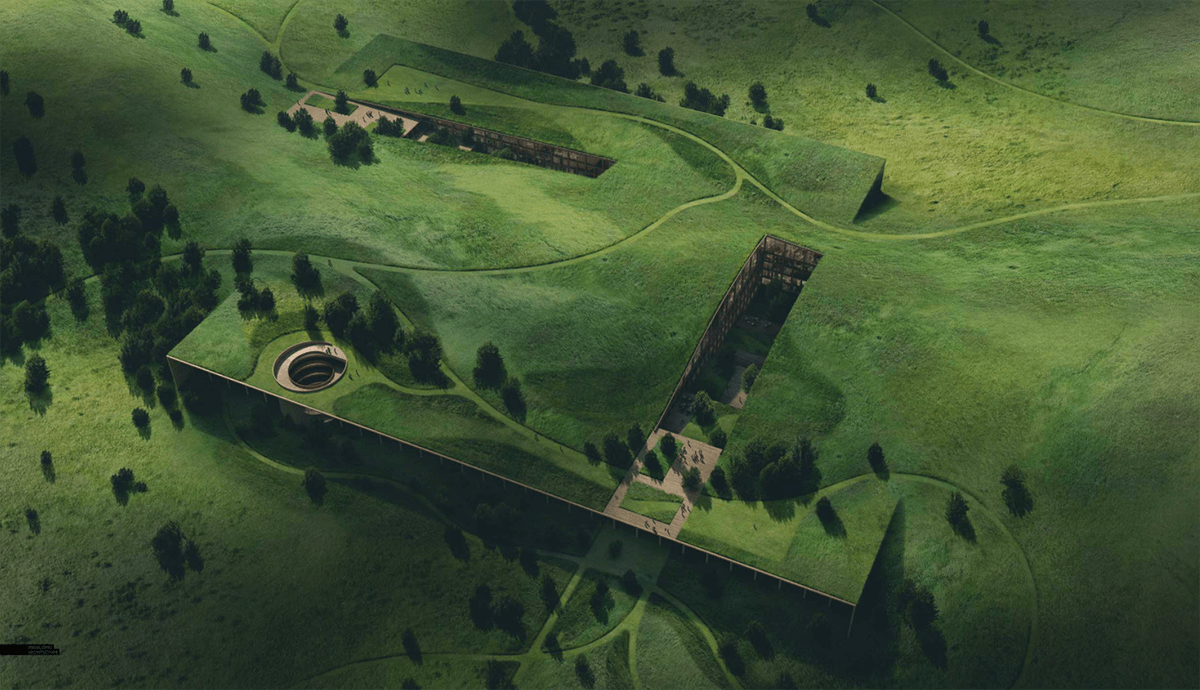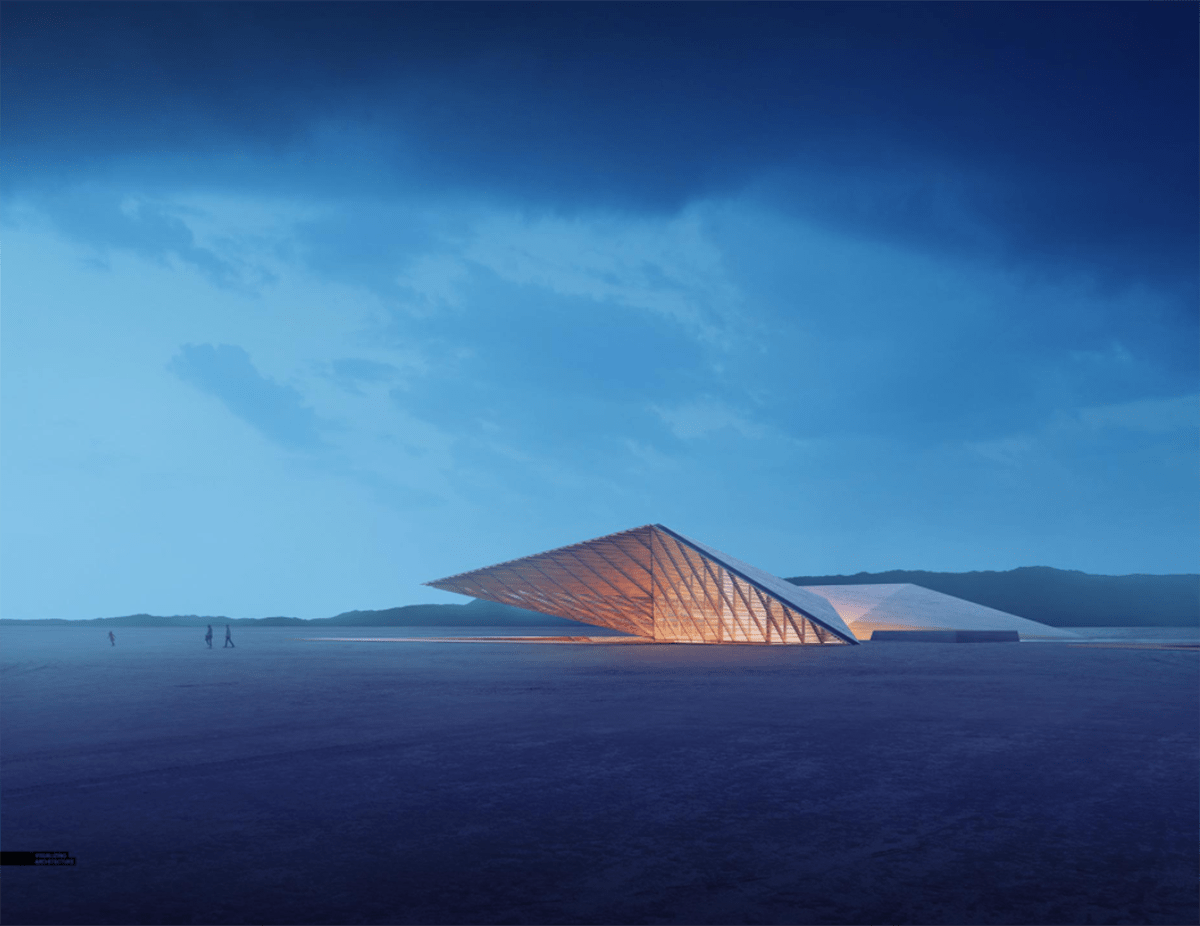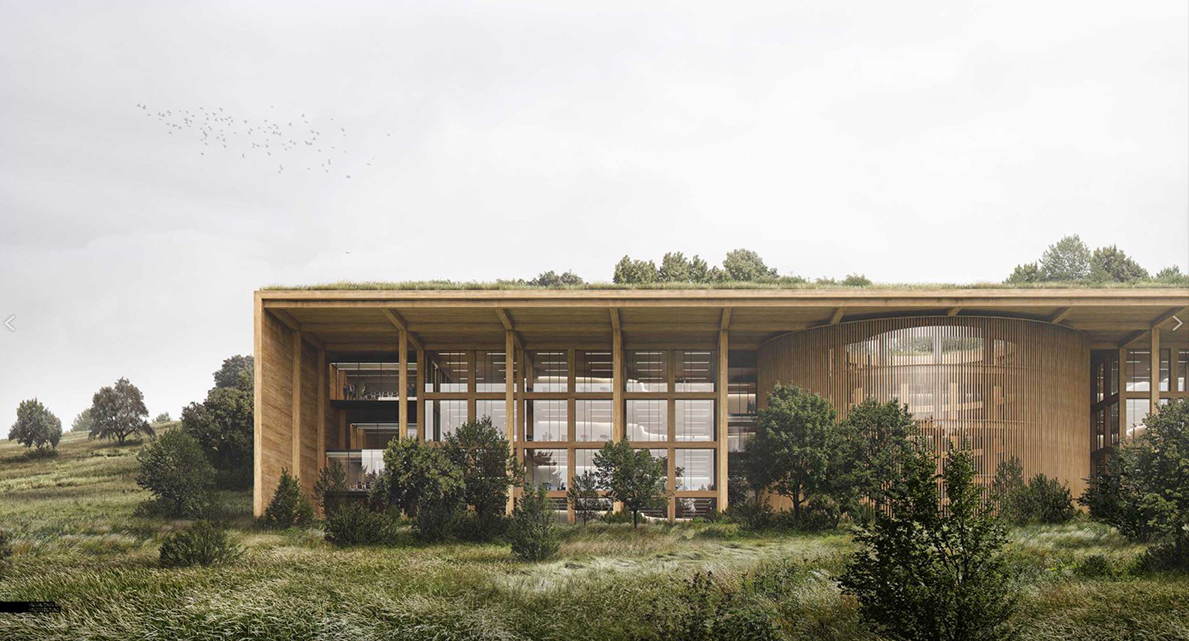Do you have architectural visualization skills? Maybe you’re asking yourself “what does even mean?” Well, you are in luck because today on the Life of an Architect Podcast we are dedicated to discussing all things related to architectural visualization and graphics and we have the perfect guest on with us to do just that …
[Note: If you are reading this via email, click here to access the on-site audio player]
Podcast: Embed
Subscribe: Apple Podcasts | Spotify | Android | iHeartRadio | TuneIn

Alex Hogrefe is the creator of visualizingarchitecture.com a website that explores architectural graphics and representational techniques. He is also the co-founder of Design Distill, an Architectural 3D Rendering Studio located in Boston, MA. Alex attended Bowling Green State University, Ohio for his BA in architecture and the Miami University of Ohio for his Masters in Architecture, before moving to Boston to work as an architect. Today, he continues to refine his visualization skills through the development of new and challenging illustrations on his website, as well as lecturing and giving workshops, and studying all visualization styles, old and new.
The Difference between “visualization” and “rendering” jump to 2:24
It’s more all-encompassing to say visualization rather than render is more of an output that comes out of the computer – rendering is a smaller part of the visualization.
When did you decide to pursue this path of architecture? jump to 5:04
The idea of doing visualization full-time didn’t even manifest itself until years after graduation – Alex spent a few years following a more traditional architectural path. It wasn’t until he left Ohio and moved to Boston (where he worked for 4 years) and started preparing visualizations as part of his architectural duties. Alex had set up a website that explained tutorial-style how he created these images and it brought some attention to him. This led to a trip to Dallas in 2013 to be a juror on the KROB Memorial Delineation Competition which is where Alex and I met one another. After returning from this trip, Alex was contacted by Andrew Hartness (who is his current business partner) who was running a visualizing studio about joining the practice. That moment was the first time Alex thought about doing visualization work full time. After working together for a few years, Alex became a partner and a new firm was established.
(Alex mentions his excitement to meet fellow 2013 KROB juror Perry Kulper who is an architect and associate professor of architecture at the University of Michigan Taubman College of Architecture and Urban Planning and you can see some examples of his work here)
Were you always good at drawing and creating digital visualizations or was it something you learned? jump to 11:01
Alex was initially reluctant to even work on a computer but when he decided to jump into that area, there wasn’t a lot of information available that he could use to advance his skill set. Around the time he was getting his graduate degree, he wanted to start improving upon his abilities and he decided to start putting what he was learning up on his website in a tutorial format.
Do you feel like going through an architectural degree path has benefited you more than going through a degree path that was specific to visualization? jump to 15:31
There are universities out there that offer degrees in Visualization (Texas A&M is one such school). There are clearly some benefits to going through the formal education process of getting an architectural degree that benefits people who specialize in making these sorts of digital images. Being able to communicate with the client base – which is typically other architects – obviously has its benefits because there is a common ground of the very specific architectural terminology being used. Being able to describe materials or understand how buildings are assembled, the tectonics of materials helps the artist when preparing the visualization.
What’s the biggest change you’ve seen in your industry regarding technology? jump to 27:18
The software is getting smarter and it’s making the barrier to entry smaller in visualization. There is software out there – like Lumion – that anybody can use because it’s so simple to just bring in your model you have this whole ecosystem within Lumion (trees, plants, vegetation, people, vehicles, etc.) and all these assets are optimized so that you keep putting more and more things into Lumion and the program can just take it and keep going. Lighting is also really simple in these programs … it used to be that you needed a firm grasp on the details and nuanced settings to build your environment but now, the software is able to do so much of this for you with little to no depth of understanding of the how’s and why’s and as a result, it is really pushing the visualization industry towards hyper-photorealistic images.
What has this technology change done to client expectations? jump to 29:35
The increase in the ease of technology along with the easy of actually using this software definitely has an impact on the industry. The number of people entering the industry due to this software advance is astounding, especially overseas. This has put an impact on the expected level of quality but also the time expectations. Alex and his company ideally plan to give their images a two-week window for their typical image creation for a project. This is ideal of course, and they book out their projects accordingly, but every once in a while they leave room in their schedule for the quicker jobs. It as a very rare instance then they accept a project with a week or less timeline. (ps: if you didn’t understand the reference to Joel Robuchon click away and enrich your life)
What changes in the visualization field have you excited? What’s coming or what should architects be aware of? jump to 35:40
This again is the advancement in the technology. And really this involves the more “technical” side of the process. And as this improves, some of the current masters of the more technical aspects may no longer be required as AI starts to easily manipulate this side of the process. It may push those in the visualization professional, this could really impact the industry. This is also a positive as it makes some parts of the process much easier, especially for those who, like Alex, is more interested in the “post” production process that involves photoshop and other non-rendering effects.
How do you see Virtual Reality impacting digital graphics? The evolution from a single still image versus a fully rendered environment? jump to 37:37
At this time, the virtual reality (VR) is not as impactful as you might believe. Alex says that they offer services in that area, but that at the moment, that accounts for maybe 5% of their workload. Alex thinks that at the moment the hardware is more of the limitation of the medium. It takes a great deal of hardware to push the quality of images/view that is typical for the expectations of clients. Also to get the best performance, users are tethered to a machine. While there are standalone headsets, the hardware is not quite ready. Alex does see this becoming a major force in the industry but it will still be a bit longer. At the rate of technology, it may not be that long at all.
The introduction of technology into everybody’s typical workflow – students are coming out of school more proficient in visualization software and techniques – how does this impact your own ideas and workflow? jump to 39:59
This is as to be expected a double-edged blade. While this is better than the students have an increased skill set, it may impact the profession of visualization. If these new students go into typical architecture offices, they may create a lack of demand for visualization services, but we all (Alex, Bob, and Andrew) agree that there is an additional “level” or mood created by those who work within the industry. These professionals have a skill set that reached beyond the rendering engines of a piece of software; a human element. This “element” allows the artist to increase the value and dare we say “beauty” of this rendered output to a higher level of artistry. Images should have a type of “fingerprint” that is unique to each artist. This may always be the case, as Alex says there is always more work in Photoshop and “post” render that he does when working on visualizations and images. This is really where he feels his value to the process is more impactful. The great architecture visualization artists have a skill set that allows them to craft the image’s view, perspectives, mood, and feel. All of that is something that a render engine does not currently really control.
Walk us through your work process and how works in your office? jump to 46:50
The process for Alex’s office is one that places an emphasis on the client feedback loop. This is a part of the timeline they need. First, they meet with the clients and have conversations about the goals and uses for the images being supplied. Will it be for a public forum, a competition, a fundraising effort, or some other audience? This helps with their way of thinking about the images and how to set them up. This also helps Alex set the mood for the final image(s). After that, they start the process and it varies based on what information they receive in that original meeting. They may be creating work from basically scratch or it could be from a full fleshed-out BIM model. Once they get this they “clean up” that information to get it into the formats and level of quality they prefer to work with. This involves changes textures or removing elements that are unnecessary. The other major point in this process is the “setting” of the views. The artistic visualization does not start until the clients approve the proposed views. Sometimes this is a single view so the modeling cleanup is less. Once these are set they begin their visualization work. During this phase of work, they provide a three-round feedback loop with the client. They deliver a set of images for review and feedback from the client and then have a three-turn loop to get to that final imagery. For regular clients, this may be one loop and for others, it may need some additional services in the form of more feedback loops.

Few people can tolerate the idea that they are hated by others – it goes against our primary programming as human beings … but would you be willing to trade on that to become special? jump to 56:55
You are given the option to take a pill that will make you a genius in any specialty you choose – but along with the renown that comes with these abilities, half of the people you meet will think you are the worst person they’ve ever met. Would you take the pill knowing these ramifications?
We ended up in basically two camps of thought on this one. Alex and Bob had some caveats while Andrew was confident in his response. What is the more pressing issue in this question…. being hated or the genius skill? It was an interesting hypothetical and so glad that Alex played along.
The industry of architecture visualization is changing rapidly due to the steady increase in technology, but the one constant is the ability of the artist to control the imagery. Alex believes this will always be the case, but the role of the individual artist may change along with the developments in technology. Creating meaningful, moving images involves more than just the output from a rendering software; it requires an artistic eye and an understanding of composition, lighting, and craft. There are many areas within this field and if you have an interest in creating uuh-mazing architectural images, this may be the career choice for you. It was great to have Alex on the show and everyone should follow his outstanding work.
Cheers,

Outro jump to 73:26 …
It is exhausting to talk as much as Bob
Screw it, I’m just going to write it down
I’ll bet you $1,000 there is an open can of paint in my house
We hate each other just so you know
Life of an Architect would like to thank our media partners, Building Design and Construction for their gracious support of this episode and our podcast.




